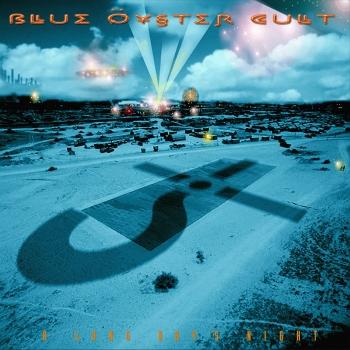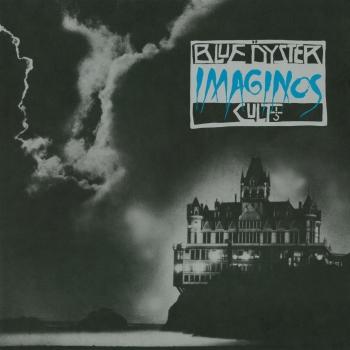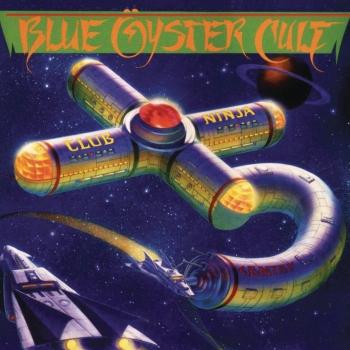
Mirrors (Remaster) Blue Oyster Cult
Album Info
Album Veröffentlichung:
1979
HRA-Veröffentlichung:
13.07.2016
Label: Sony / Columbia / Legacy
Genre: Rock
Subgenre: Hard Rock
Interpret: Blue Oyster Cult
Komponist: R. Meltzer, J. Bouchard, D. Roeser, M. Moorcock, J. Trivers, Eric Bloom, A. Lanier, B. AbbottR. BINDER
Das Album enthält Albumcover
Entschuldigen Sie bitte!
Sehr geehrter HIGHRESAUDIO Besucher,
leider kann das Album zurzeit aufgrund von Länder- und Lizenzbeschränkungen nicht gekauft werden oder uns liegt der offizielle Veröffentlichungstermin für Ihr Land noch nicht vor. Wir aktualisieren unsere Veröffentlichungstermine ein- bis zweimal die Woche. Bitte schauen Sie ab und zu mal wieder rein.
Wir empfehlen Ihnen das Album auf Ihre Merkliste zu setzen.
Wir bedanken uns für Ihr Verständnis und Ihre Geduld.
Ihr, HIGHRESAUDIO
- 1Dr. Music03:12
- 2The Great Sun Jester04:45
- 3In Thee03:49
- 4Mirrors03:45
- 5Moon Crazy04:03
- 6The Vigil06:25
- 7I Am the Storm03:42
- 8You're Not the One (I Was Looking For)03:14
- 9Lonely Teardrops03:40
Info zu Mirrors (Remaster)
Blue Öyster Cult's 1979 response to the punk rock explosion is a bit of a puzzle. Recorded without Sandy Perlman, the band's long-time conceptual guru and producer, „Mirrors“ is essentially metal-lite pop--simultaneously more accessible and more generic than the Cult's usual self-consciously sinister fare; in fact, there are moments here when you could be excused for thinking you're actually listening to Boston or Billy Joel. Still, what the music lacks in menace it makes up for in melodic hooks and four-part harmonies; standout tracks in that regard include "The Great Sun Jester," a sweet piece of psychedelic pop that verges on the Beatle-esque; "You're Not the One," a nice new wave-style put-down that recalls the group's roots as a Long Island bar band; and "In Thee," which mates soaring vocals to the familiar chords from "Sweet Jane."
„Blue Öyster Cult tried a new producer on Mirrors, replacing longtime mentor Sandy Pearlman with Tom Werman, a CBS staffer who had worked with Cheap Trick and Ted Nugent. The result is an album that tries to straddle pop and hard rock just as those acts did, emphasizing choral vocals (plus female backup) and a sharp, trebly sound. But this approach appeared to displease longtime metal-oriented fans without attracting new ones: "In Thee" became a minor singles-chart entry, but the album broke BÖC's string of five gold or platinum albums in a row. The real reason simply may have been that the songs weren't distinctive enough. Much of this is generic hard rock that could have been made by any one of a dozen '70s arena bands.“ (William Ruhlmann, AMG)
Eric Bloom, stun guitar, vocals
Donald "Buck Dharma" Roeser, guitar, vocals
Allen Lanier, keyboards, guitar
Joe Bouchard, bass, vocals
Albert Bouchard, drums, vocals
Additional musicians:
Mickey Raphael, harmonica on "Dr. Music"
Jai Winding, strings on "In Thee"
Ellen Foley, background vocals
Genya Ravan, background vocals
Wendy Webb, background vocals
Recorded Kendun Recorders, Burbank, California; CBS Recording Studios, New York City; The Record Plant, Los Angeles, California
Engineered by Gary Ladinsky
Produced by Tom Werman
Digitally remastered
Blue Öyster Cult
Spanning three decades, Blue Öyster Cult has a long and storied history. The band got its start in the late ’60s on Long Island, New York, as the Soft White Underbelly, but each member had been involved in bands previously in high school and college, before ending up in the “right place at the right time” to create the beginnings of Blue Öyster Cult.
The threads that eventually wove together to create Blue Öyster Cult got their start in upstate New York.
Long Island native Donald Roeser and Albert Bouchard (of Watertown, New York) met at Clarkson College, in Potsdam, NY. The two were introduced by a mutual friend, Bruce Abbott (who later co-authored “Golden Age of Leather” with Donald). With Abbott and two other friends, they formed “The Disciples” and played college parties and local beer halls. The next year, the band reformed and played the same circuits as “Travesty” (named after the Blues Project album). Through all this, their studies fell by the wayside, and both Albert and Donald decided to quit college to concentrate on playing music full-time.
Eventually “Travesty” broke up, Donald and Albert took seperate paths for a while. Donald went back to Long Island, and Albert took a musical opportunity in Chicago. After moving there, though, the band fizzled, and Albert returned to NY and joined Donald. In the meantime, Donald had been jamming with local musicians, and had met a person that would become very influential in their future: Sandy Pearlman.
Sandy Pearlman became interested in rock music around the time of the British Invasion, and was a pioneering voice of rock criticism, opening a new field for creative writers like Lester Bangs. Both Pearlman and his friend Richard Meltzer were contributors for seminal magazine “Crawdaddy!,” the first magazine that dedicated itself to analysis of rock music and its culture.
Allen Lanier came into the fold by way of guitarist John Wiesenthal. Allen had accepted employment at a film company at which Wiesenthal was also an employee. After becoming acquainted, Wiesenthal invited Allen out to Long Island to meet and jam with the loose group of musicians he played with, and Allen began to regularly jam with them.
An old house near Stony Brook College became ground zero for the formative band, and casual jams with whomever happened to be hanging around began to turn into rehearsals with a core band, which included Wiesenthal, Donald, Albert, Allen and Andrew Winters, a school friend of Donald. It was 1967.
Pearlman (along with Meltzer and Wiesenthal) had been a student at Stony Brook, and was becoming increasingly involved in the music scene. When he heard the formative combo, he instantly recognized the talent at work. He had an idea for a band, and thought that this group of musicians had the chops to put that idea into play. The musicians saw that Pearlman’s contacts and stature in the local (and increasingly national) scene could help them spawn a career as well, and an alliance was formed.
Dieses Album enthält kein Booklet

























